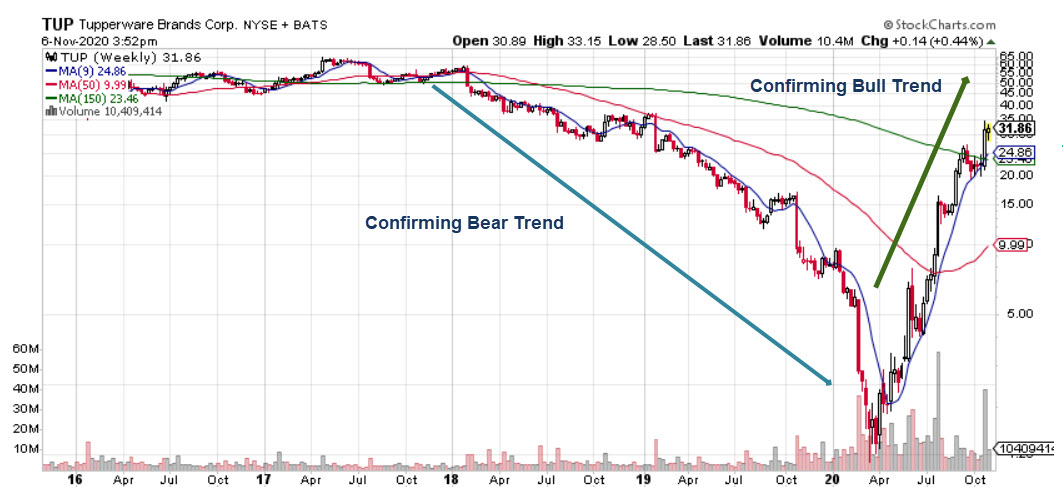 Moving Averages are simple but powerful indcators for investors as they reflect a prevailing trend in the price of a stock, fund or indices, over the short, mid and long term. They can be used alone or in combination with technical analysis or Dow Theory, for example, to chart both primary trends and secondary counter cyclical trends.
Moving Averages are simple but powerful indcators for investors as they reflect a prevailing trend in the price of a stock, fund or indices, over the short, mid and long term. They can be used alone or in combination with technical analysis or Dow Theory, for example, to chart both primary trends and secondary counter cyclical trends.
There are two principal moving averages used by investors:
1. A Simple Moving Average is a historic weighted average price indicator for a stock, fund or market indices. The objective is to provide an average weighted indicator of the stock price that evens out daily or weekly fluctuations in price. A simple moving average takes the artihmetic "mean" of historic prices over a set period of time whether that is 9, 15, 20, 50, 100 or 200 or more days in the past.
2. An Exponential Moving Average is similar to the above except it provides more arithmetic weight and emphasis to the most recent historic price data closer to the current date/price making the exponential moving average indicator more responsive to recent or current price movements.
Becuase both inidcators are based on historic prices they are referred to as lagging indicators. The greater the period of time over which the indicator is being measured, the greater the lag in the indicator. So, for example, a 200 day moving average trend line is going to respond more slowly to price changes in the short term versus a 9 day moving average which is going to be more responsive and theerefore reflective of current price movements. A 9 day moving average trned line will therefore track current or recent price movements more closely, whereas a 200 day moving average will not as it is lagging behind the current price trend.
Looking at moving averages across different timelines can provide useful information to investors. When moving averages, for example, over different timespans (e.g. 9, 50 and 100 day moving averages) all move in the same direction as the prevailing price trend this indicate a "confirming trend" whether that is a bullish trend in the case of prices moving up, or a bearish trend in the case where prices are trneding down. Moving averages do not always move in the same direction especially at the start of a counter-cyclical trend. A short term moving average can point to a longer term shift in the price of a stock or indices or it can just be a short term sedonary or tertiary counter cyclical movement in the midst of a longer term trend.
Investors look for confirmations in trend changes using different indicators in addition to other technical indicators. So, for example, when short term changes in trends or moving averages are backed up or conifrmed by medium and longer term trends in moving averages, it adds weight to a shift in trend being a more sustainable trend. It should be noted that investors who use technical analysis (which includes moving averages) to make investment decisions, they will ignore or place less emphasis on fundamental analysis because they believe that the price movement of a stock or indices tells the real truth about what investors think about a stock, fund or indices. Fundamental analysis, on the other hand, looks at the valuation of a company and weighs all the factors influencing this metric including competitor valuations to evaluate the relative worth of a company and whether it is good value, undervalued or over-valued.
Moving Averages tell a factual story about what the majority of investors think
Moving averages show the prevaling trends of what investors think. It may turn out to be flawed thinking of course. Smart investors can bet against the prevailing trend if they think it is false. It is always worthwhile checking whether a price trend is being backed up or with notable buys or sells from large well known institutions or/and smart investors.
Regardless of what one might think about the trend or prospects of a company or indices, as one famous investor once said, "Don't fight traffic". By monitoring moving averages you can account for the flow of traffic and that makes it a simple but powerful indicator to have in one's toolbox.